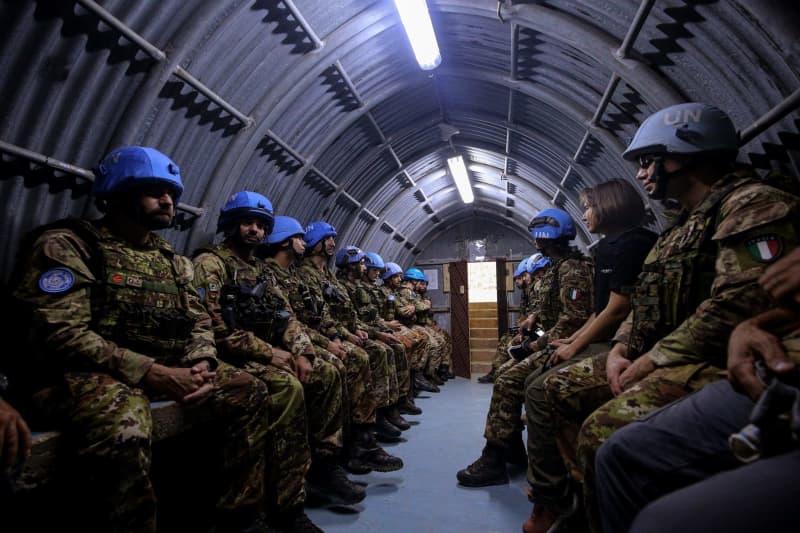On Friday, the United Nations Interim Force in Lebanon (UNIFIL) reported a significant incident involving the Israeli military, accusing it of “deliberate and direct destruction” of its equipment and property near the border of Lebanon. According to UNIFIL, Israeli army excavators and bulldozers destroyed part of a fence and concrete structure within a UNIFIL position in Ras Naqoura. They characterized the event as “a flagrant violation” of international law, noting that this was not an isolated incident but part of a pattern of similar actions by the Israel Defense Forces (IDF) against UN operations. UNIFIL expressed concern over the safety of its personnel and reminded the IDF of its obligations to respect the integrity of UN premises.
Simultaneously, tensions in the region escalated, as reported missile fire from Lebanon struck northern Israel on the same day. The Israeli military announced that five missiles targeted the predominantly Arab town of Kafr Yasif, situated near Haifa. Reports indicated that four of these missiles were successfully intercepted, while one struck a residential home, fortunately without causing injuries. Despite the intense volatility, around 80 missiles had been recorded in total, which reflected a slight decrease compared to previous days. The ongoing conflict has seen Hezbollah, the militant group aligned with Iran, persistently launching attacks from Lebanese territory, contributing to fears of further escalation.
In a retaliatory measure, the Israeli Defense Forces targeted Hezbollah commando centers situated within civilian areas of Tyre, a coastal city in southern Lebanon. The IDF accused Hezbollah of endangering Lebanese civilians by embedding its military operations within residential zones. The strikes reportedly resulted in three deaths and injuries to approximately thirty others, according to Lebanese Health Ministry reports. The Israeli military claimed to have destroyed various rocket launch sites, killed numerous Hezbollah fighters, and dismantled weapons caches, though such information remains unverified by independent sources. This strategy reflects Israel’s ongoing objective to push Hezbollah away from the border, facilitating the return of around 60,000 civilians who had evacuated northern Israel amid ongoing hostilities.
The instability in the region was not confined to the Israeli-Lebanese border. The Houthi militia, based in Yemen and also aligned with Iran, claimed responsibility for an attack on the Nevatim military airbase in southern Israel. Their military spokesperson announced the successful interception of a U.S. drone over western Yemen, as Israeli forces reported intercepting missiles launched from Yemen. This incident is indicative of the broader conflict involving the so-called “Axis of Resistance,” a coalition of Iranian-aligned militias that have actively attacked Israel since the escalation of violence in Gaza over the past year, reflecting the complex interconnections in regional geopolitics.
Ongoing military actions by both sides showcase an alarming cycle of retribution and violence, with Israel’s extensive military operations targeting Hezbollah in Lebanon mirroring the ongoing hostilities with Hamas in the Gaza Strip. As the conflict persists, attacks appear to be increasingly coordinated among various Iranian-affiliated factions, including those in Iraq and Yemen. The situation emphasizes the growing strategic threats facing Israel, stemming not only from direct hostilities but also from a network of regional allies which challenges Israeli security.
In conclusion, the various incidents—spanning the destruction of UN property, missile attacks on civilian areas, and military confrontations involving Hezbollah and the Houthis—highlight the fragility of peace in the region. The accusations leveled by UNIFIL against the Israeli military underscore the international ramifications of such conflicts, which violate treaties designed to protect humanitarian organizations. As regional dynamics evolve, with multiple actors engaging in hostilities and retaliatory strikes, the prospects for a resolution appear increasingly bleak. Each escalation threatens to further entrench hostilities, complicating efforts to achieve stability in Lebanon and the broader Middle East, necessitating urgent dialogue and intervention to mitigate the possibility of a broader conflict.

